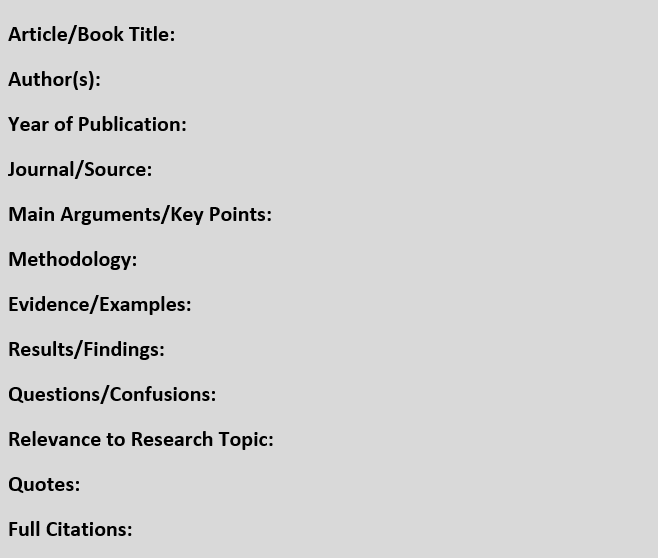When note-taking, it's critical to develop a method that works the best as per individual requirements. Here are some quick, actionable recommendations to create a successful note-taking system:
Step 1: Prepare for note-taking
It is critical to have the proper equipment and atmosphere before beginning note-taking. Locate a quiet place where one can concentrate without being distracted. Collect pens, highlighters, and paper, as well as a digital gadget that one feels comfortable using.
Step 2: Skim through the material first
Before diving in, take a few minutes to scan through the article or chapter that will be read. Check for headings, subheadings, and bold or italicized language that can serve as a guide for the information. This will aid in identifying crucial topics and organising notes accordingly.
Step 3: Take notes actively
Take notes while reading to actively connect with the subject. To save time, use acronyms and symbols, and rephrase concisely to ensure that the content is comprehended. Underline or highlight essential phrases or concepts that can be revisited later.
Step 4: Organize notes
Once the note-taking is complete, sort them into categories that make sense. Consider categorising notes according to subject, approach, or other relevant factors. To organise notes and make it easier to discover specific material later, use headings and subheadings.
Step 5: Review notes regularly
Regularly reviewing notes can help in recalling the information and staying organised. Set aside time each week to go through the notes and make sure they are up to date. Fill in any gaps or explain any information that may be unclear at this period.
Note-taking Template
It is important to keep in mind that the purpose of note-taking is not merely to transcribe the content but to assist in synthesising and comprehending it. Utilising notes to identify key themes and connections in articles and to formulate personal arguments and ideas can be beneficial. By having a well-structured note-taking system, researchers can achieve academic and professional success.
Here's a note-taking template for organising literature:

When taking notes on each item, using a template like this might help researchers to keep the literature organised and focused. Consistent use of the same structure in note-taking enables one to compare and contrast various articles and identify important information. The template can be personalised by including or excluding categories to suit individual needs.
To Wrap Up!
Organising literature is a crucial component of the research process, and taking notes while reading is a useful tool for improving comprehension, organisation, and synthesis of the content. By following the techniques given in this article, researchers can create a thorough database of relevant sources, organise citations, and take excellent notes, saving time and assisting in developing concrete arguments and ideas.